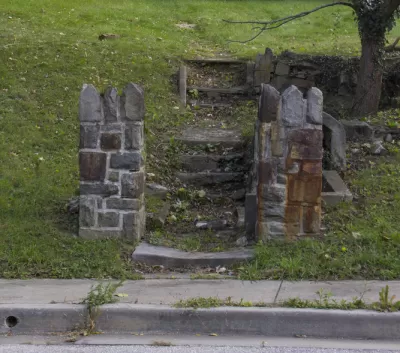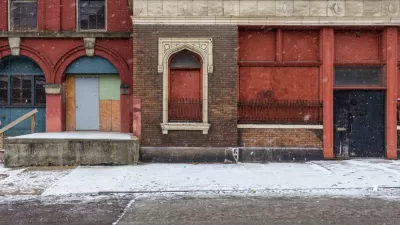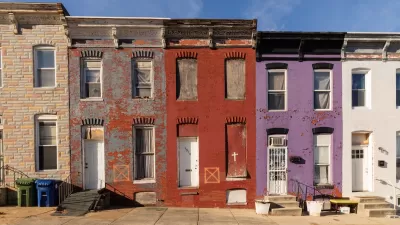As the city of Baltimore grapples with a declining population, it faces obstinate challenges in controlling the problems associated with vacant buildings, including the "vicious cycle" of vacancies causing more vacancies.

"Despite demolition crews working at an unprecedented pace in recent months to tear down Baltimore’s vacant houses, the number of abandoned buildings in the city has barely budged," reports Ian Duncan and Christine Zhang.
"Even as long rows of empty houses are being razed, other homes are going vacant much faster than officials had expected — for reasons they’re at a loss to explain."
In February, the city counted 16,724 vacant buildings in the city. Eight months later, the city counted 16,577. The city had hoped to bring that number below 15,000 by the beginning of 2020, but now it appears that goal is out of reach.
According to city data, the number of vacant buildings in neighborhoods targeted by the city demolition program has dropped, but increasing numbers of vacant buildings in other neighborhoods have kept the overall figures stagnant.
The article includes a description of the "vicious cycle" caused by vacant buildings begetting more vacant buildings, the negative effects of that cycle, and a more granular analysis of neighborhood-level demolitions and vacancies.
FULL STORY: Baltimore is furiously knocking down vacant houses — but barely keeps up as new ones go empty

Planetizen Federal Action Tracker
A weekly monitor of how Trump’s orders and actions are impacting planners and planning in America.

Maui's Vacation Rental Debate Turns Ugly
Verbal attacks, misinformation campaigns and fistfights plague a high-stakes debate to convert thousands of vacation rentals into long-term housing.

San Francisco Suspends Traffic Calming Amidst Record Deaths
Citing “a challenging fiscal landscape,” the city will cease the program on the heels of 42 traffic deaths, including 24 pedestrians.

Amtrak Rolls Out New Orleans to Alabama “Mardi Gras” Train
The new service will operate morning and evening departures between Mobile and New Orleans.

The Subversive Car-Free Guide to Trump's Great American Road Trip
Car-free ways to access Chicagoland’s best tourist attractions.

San Antonio and Austin are Fusing Into one Massive Megaregion
The region spanning the two central Texas cities is growing fast, posing challenges for local infrastructure and water supplies.
Urban Design for Planners 1: Software Tools
This six-course series explores essential urban design concepts using open source software and equips planners with the tools they need to participate fully in the urban design process.
Planning for Universal Design
Learn the tools for implementing Universal Design in planning regulations.
Heyer Gruel & Associates PA
JM Goldson LLC
Custer County Colorado
City of Camden Redevelopment Agency
City of Astoria
Transportation Research & Education Center (TREC) at Portland State University
Jefferson Parish Government
Camden Redevelopment Agency
City of Claremont




























